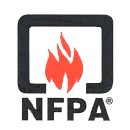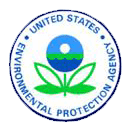Solvent Recyclers
Code requirements:
|
Both Spray Gun Cleaners and Solvent Recyclers,
when utilizing flammable or combustible materials, must follow the
fire codes in your area. The primary codes followed today are:
NFPA
30 Flammable and Combustible Liquids Code |
|
|
|
|
| IFC International Fire Code |
|
|
|
|
| Listing Requirements: (Solvent Recyclers) Most Local Jurisdictions (Fire Marshal, Electrical Inspector, etc.) and Insurance Companies require Solvent Recyclers to be Listed by a third party (UL, ETL, CSA, etc.) The standards used for listing these types of equipment are: U.L.
2208 Standard for Solvent Distillation Units Note: Many other
Standards, such as NFPA are identified in this document depending
on the application of the unit. |
|
|
|
|
|
Environmental Requirements |
|
|
|
|
| EPA Requirements "Cradle to Grave"
Liability: EPA: In the Pollution Prevention Act of 1990, the preferred waste minimization options, as defined by section 6602(b) of the Act, are prevention and environmentally sound recycling followed by treatment and disposal. A 1994 guideline
document (EPA/625/R-93/017) states that: "....recycling should be
used where possible to minimize or avoid the need to treat wastes
that remain after viable source reduction options have been
evaluated and/or implemented." |
|
|
|
|
|
DO NOT THROUGH YOUR STILL BOTTOMS IN THE TRASH! If you receive materials considered as hazardous: Then all still bottoms are considered hazardous until proven different! To prove different
requires: We would also
recommend: |
|


